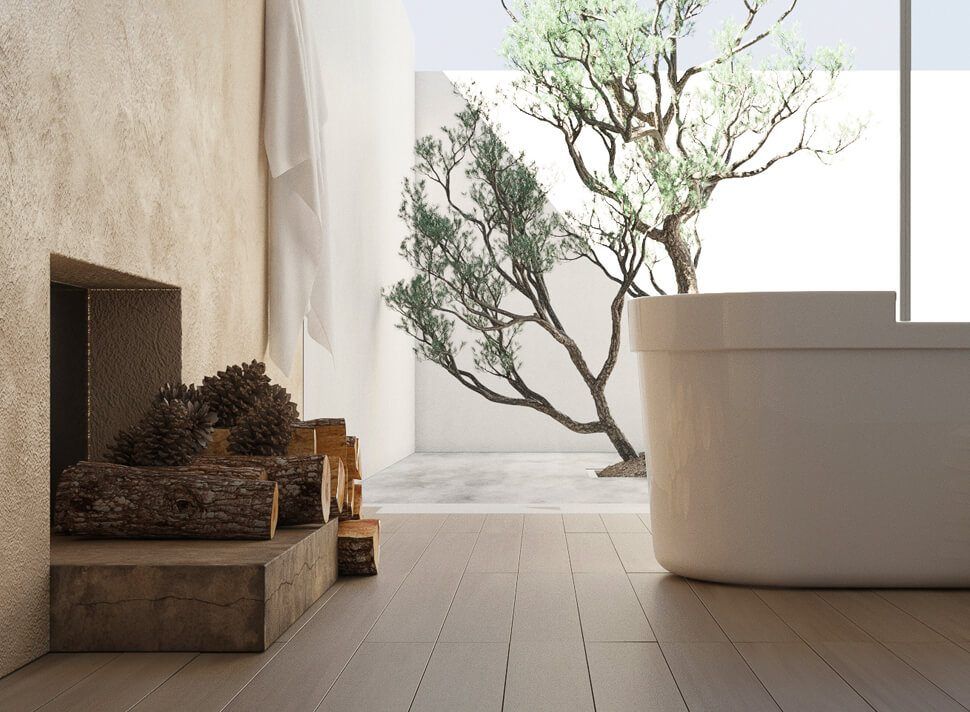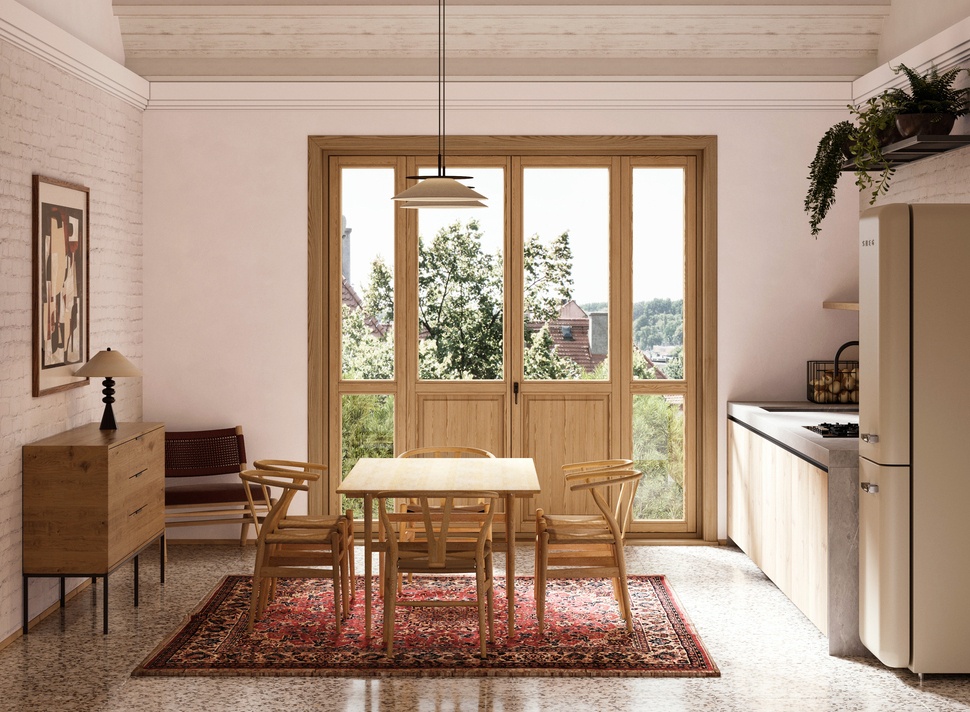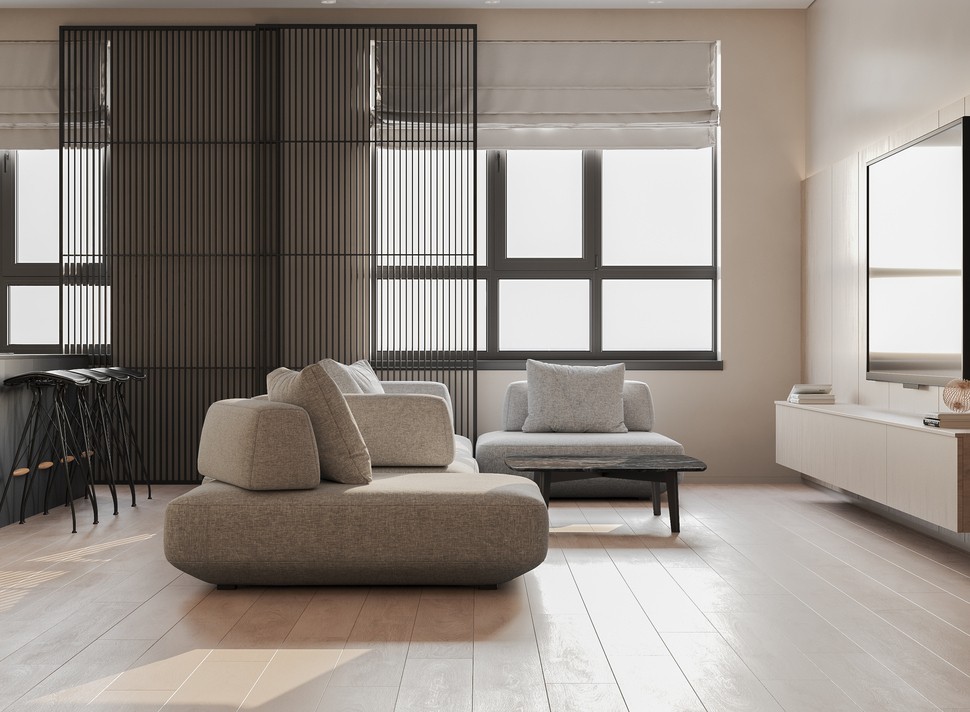Architectural Poetry: Capturing Emotion in Interior House Rendering
Introduction: The Intersection of Art and Design
In the realm of architectural and interior design, a captivating fusion of artistry and functionality exists. At its core, design serves a practical purpose – creating aesthetically pleasing and functional spaces. However, within this purpose lies an opportunity to transcend the boundaries of functionality and evoke profound emotions. This is where architectural poetry comes into play, where the lines, colors, and textures of interior house rendering are woven together to create spaces that resonate with the human soul. In this exploration, we will journey through the world of architectural poetry, unraveling the techniques, philosophies, and the emotional impact it brings to interior design.
The Art of Interior Rendering
Interior rendering, often regarded as the bridge between design concepts and reality, has evolved significantly over the years. It is a powerful tool for architects and interior designers to communicate their ideas to clients, contractors, and other stakeholders. While its primary function is to depict the physical aspects of a space, it can go beyond the tangible, delving into the intangible realm of emotions.
Part One: The Visual Symphony
Mastering the Play of Light and Shadow
One of the foundational elements of architectural poetry lies in the manipulation of light and shadow. Lighting plays a pivotal role in setting the mood of a space, and in rendering, this translates into a delicate dance of illumination. Designers use advanced rendering software to simulate the interplay of natural and artificial light within a room, allowing clients to experience the ever-changing ambiance throughout the day.
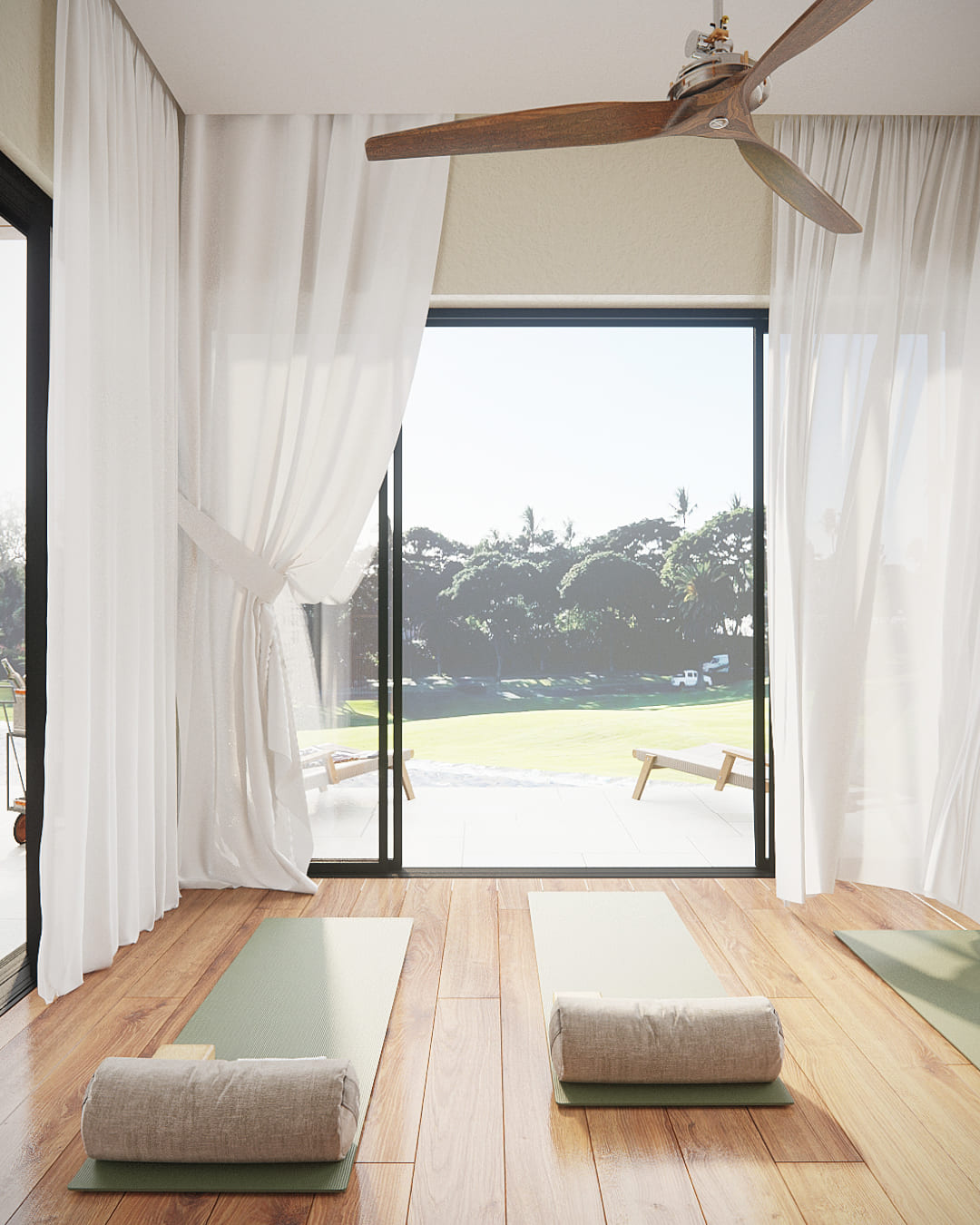
Image from Yousee Studio
Color Palette as an Emotional Palette
Colors have the extraordinary ability to evoke emotions. In architectural poetry, the choice of color palette is akin to selecting the hues for a painter's canvas. From the calming blues of a coastal retreat to the vibrant reds of a lively restaurant, colors breathe life and feeling into spaces. Rendering technology enables designers to experiment with an extensive spectrum of colors, ensuring that each shade harmonizes with the intended emotional resonance of the room.
Texture: The Language of Sensation
Texture is the tactile language of design, capable of eliciting a sensory response. Whether it's the smoothness of marble underfoot or the warmth of a wooden tabletop, textures convey a wealth of emotions. Through advanced rendering techniques, designers can accurately simulate textures, allowing clients to virtually touch and feel the materials that will shape their environment.
Composition and Spatial Flow
The arrangement of elements within a space, known as composition, can dictate how individuals navigate and perceive that space. It's the choreography of design. The document is carefully orchestrated in architectural poetry to guide the viewer's eye, creating a visual journey that sparks emotion. Clients can experience this spatial flow through rendering before a single brick is laid.
Part Two: Emotion by Design
Designing for Psychological Comfort
Interior rendering doesn't just address the physical comfort of a space but also the psychological comfort. The art of architectural poetry extends to crafting environments that promote mental well-being. From the choice of ergonomic furniture to the strategic positioning of elements that reduce stress, these design decisions are carefully integrated into the rendering process to ensure that spaces resonate positively with inhabitants.
Storytelling Through Space
Every space has a story, and architectural poetry is the narrative. Designers create immersive environments by infusing areas with elements that echo a specific theme or cultural influence. Through rendering, clients can step into these stories, experiencing the richness of the narrative even before they set foot in the physical space.
Sustainability and Ethical Design
Architectural poetry isn't limited to aesthetics and emotion; it extends to ethics. In an era of heightened environmental consciousness, rendering techniques also focus on sustainable design. Designers use rendering to showcase eco-friendly materials, energy-efficient solutions, and sustainable practices. This appeals to the intellect and the heart as clients embrace strategies that align with their ethical values.
The Role of Technology
The canvas of architectural poetry is not just brick and mortar; it's also the digital realm. Advanced rendering technologies, including virtual reality (VR) and augmented reality (AR), have ushered in a new era of interactive design. Clients can now immerse themselves in the spaces, adjusting elements in real time and genuinely feeling the emotional impact of design decisions.
Conclusion: The Harmonious Union of Art and Design
Architectural poetry is a testament to the power of design to transcend the ordinary and elevate spaces into emotional experiences. It combines art and design principles, harmonizing them into areas that resonate with those who inhabit them. Through the lens of rendering, clients are no longer passive observers but active participants in creating their environments. As technology continues to advance, the future of architectural poetry promises even deeper emotional connections between individuals and the spaces they call home.
To continue this exploration of architectural poetry and its transformative role in interior design, stay tuned for the second part of this article, where we will delve deeper into case studies and examples that showcase the emotional impact of design.
Case Studies and Examples
In the first part of our exploration into architectural poetry and its profound impact on interior house rendering, we delved into the fundamental elements and principles that contribute to the emotional resonance of design. In the second part of this article, we will embark on a journey through real-world case studies and examples that vividly illustrate the transformative power of architectural poetry.
Case Study 1: The Tranquil Retreat
Imagine a lakeside cabin nestled amidst lush forests and overlooking the serene waters of a lake. This project aimed to create a space that exuded tranquility, inviting occupants to disconnect from the hectic pace of modern life. Through architectural poetry, the designers crafted an environment where every element conspired to evoke a deep sense of calm.
- Color Palette: Soft, earthy tones dominated the color palette, with shades of green, beige, and muted blues. These colors mimicked the natural surroundings, creating a seamless connection between the interior and exterior.
- Texture: Natural textures prevailed, with rough-hewn wooden beams, a stone fireplace, and soft, tactile upholstery. These textures invited tactile exploration, enhancing the sensory experience.
- Spatial Flow: The spatial layout was designed to maximize lake views while maintaining privacy. Large windows framed picturesque vistas, creating a seamless visual connection with nature.
- Lighting: Soft, diffused lighting simulated the gentle play of sunlight filtering through trees. The lighting scheme was carefully calibrated to transition from day to night seamlessly.
The result? A rendering that transported viewers to a haven of tranquility, where the stresses of daily life melted away, replaced by a profound sense of peace.
Case Study 2: The Eclectic Urban Loft
In stark contrast to our first case study, we venture into the heart of a bustling metropolis – a chic urban loft that celebrates diversity and creativity. The objective was to create a space that embraced an eclectic mix of styles, textures, and cultures, echoing the vibrant energy of city life.
- Color Palette: Bold and vibrant colors took center stage, with rich jewel tones juxtaposed against industrial grays and blacks. The contrast of colors created a sense of drama and visual interest.
- Texture: The texture palette was equally diverse, with exposed brick walls, polished concrete floors, plush velvet furniture, and intricate handmade rugs. The tactile variety added depth and complexity to the space.
- Spatial Flow: The loft's open-plan layout encouraged movement and exploration. Curved partitions and strategically placed furniture created distinct zones within the open space, each with a unique character.
- Lighting: A dynamic lighting scheme allowed for flexibility. Bright, focused lighting highlighted artworks and collectibles, while ambient lighting created an inviting atmosphere.
The rendering of this urban loft showcased the harmonious coexistence of seemingly disparate elements, celebrating the diversity of city life and inviting viewers to immerse themselves in its vibrant energy.
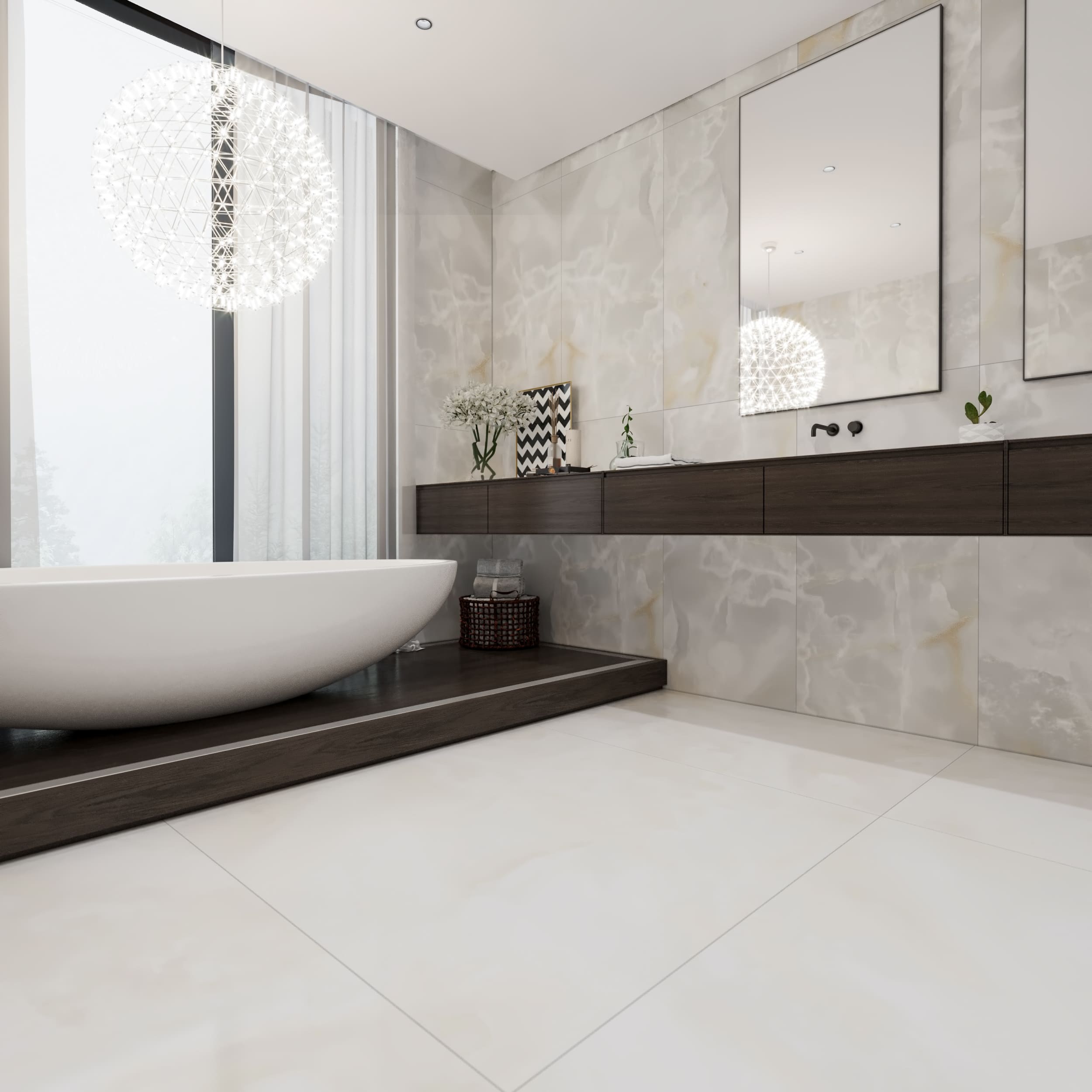
Image from Yousee Studio
Case Study 3: The Sustainable Oasis
Our final case study takes us into sustainability and ethical design. The challenge here was to create a space that showcased the beauty of sustainable materials and communicated a deep commitment to environmental responsibility.
- Color Palette: Natural, earthy tones dominated the palette, with shades of reclaimed wood, organic greens, and calming blues. These colors symbolize the harmony between human habitation and nature.
- Texture: Sustainable materials such as reclaimed wood, bamboo, and recycled glass featured prominently. These materials added texture and conveyed a powerful message about responsible design.
- Spatial Flow: The layout emphasized the connection with the outdoors. Large, retractable glass walls blurred the boundaries between interior and exterior spaces, encouraging a sense of unity with the environment.
- Lighting: Energy-efficient LED lighting was seamlessly integrated—the lighting design aimed to reduce energy consumption while providing optimal illumination for various activities.
The rendering of this sustainable oasis was not just a visual representation of design; it was a manifesto of environmental consciousness. It demonstrated that beauty and sustainability could coexist, leaving viewers with admiration and inspiration.
Conclusion: The Endless Canvas of Architectural Poetry
Through these case studies and examples, we have witnessed the transformative power of architectural poetry in interior house rendering. It's a reminder that design is not confined to the physical; it extends into the emotional, cultural, and ethical realms. Architectural poetry is the language through which designers communicate these dimensions, crafting spaces that resonate deeply with those who inhabit them.
As technology advances, rendering techniques will only become more sophisticated, allowing designers to push the boundaries of creativity and emotional impact. The future of architectural poetry promises even more captivating stories, more profound connections, and more breathtaking spaces.
In this ever-evolving design world, one thing remains constant – the human desire for spaces that move us, inspire us, and speak to our souls. Architectural poetry is the brushstroke, the melody, and the verse that fulfill that desire.
To explore further into the world of design and the boundless possibilities of architectural poetry, stay tuned for our upcoming articles and insights.
Tools and Techniques
In this final installment of our exploration into architectural poetry and its impact on interior house rendering, we will explore designers' tools and techniques to breathe life into their creative visions. As we have seen in the previous sections, architectural poetry is a multidimensional art form, and translating its emotional depth into a rendering requires a combination of technical prowess and artistic finesse.
The Digital Canvas: 3D Rendering Software
One of the most fundamental tools in the arsenal of modern designers is 3D rendering software. These sophisticated programs allow designers to create highly detailed, realistic renderings that capture the essence of their designs. Some popular 3D rendering software options include:
- AutoCAD: Widely used for creating 2D and 3D drawings, AutoCAD is a versatile tool that many designers rely on for their initial concepts.
- SketchUp: Known for its ease of use and extensive 3D modeling capabilities, SketchUp is a favorite among designers for creating complex interior and architectural models.
- Blender: Blender has gained popularity as an open-source software for its flexibility and robust rendering capabilities. It's particularly well-suited for those who want to experiment with unconventional designs.
- 3ds Max: Developed by Autodesk, 3ds Max is renowned for its powerful rendering engine, making it an excellent choice for creating photorealistic interior renderings.
These software options give designers the digital canvas they need to bring their ideas to life. They enable the creation of intricate 3D models, realistic textures, and immersive lighting, all essential elements of architectural poetry.
Lighting: Painting with Luminescence
Lighting is an integral part of architectural poetry. It can transform a space, evoke emotions, and highlight design elements. Designers employ various lighting techniques to achieve their desired effects:
- Natural Light: Harnessing the beauty of natural light is a hallmark of architectural poetry. Large windows, skylights, and strategically placed openings allow daylight to flood a space, creating a sense of warmth and connection to the outdoors.
- Artificial Lighting: Interior designers carefully select lighting that complements the overall design. Whether it's pendant lights, chandeliers, sconces, or recessed lighting, each fixture contributes to the ambiance.
- Dynamic Lighting: Dynamic lighting systems offer flexibility for spaces that serve multiple purposes. Dimmable lights, color-changing LEDs, and intelligent lighting control systems enable designers to adapt the lighting to different scenarios.
- Accent Lighting: Accent lighting is used to draw attention to specific architectural or design elements. This technique adds drama and visual interest to critical features such as artwork, sculptures, or focal points.
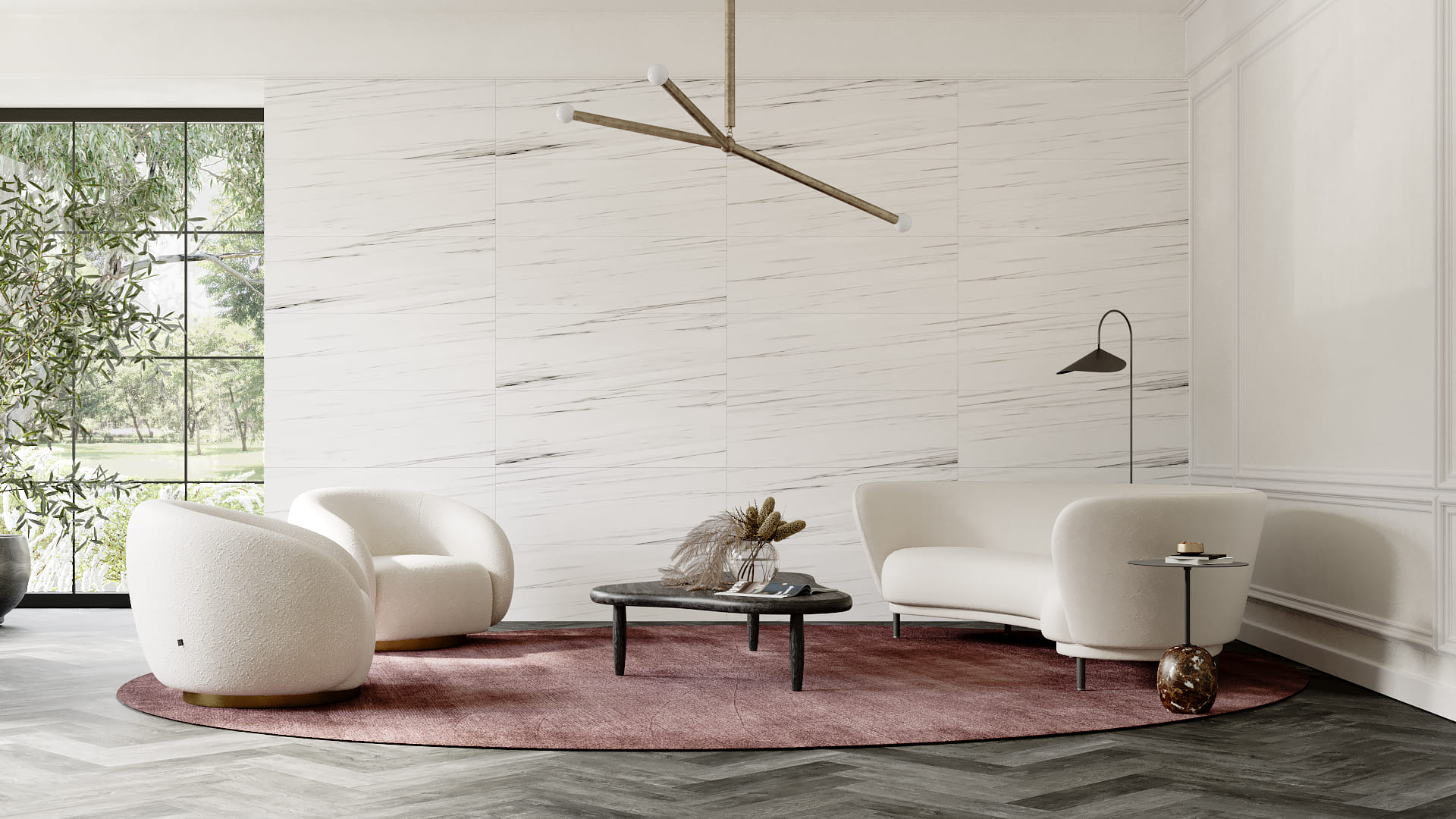
Image from Yousee Studio
Textures and Materials: The Palette of Sensations
Textures and materials are the tactile elements that invite occupants to interact with a space. In architectural poetry, the choice of materials is deliberate and meaningful:
- Wood: Wood is revered for its warmth and versatility. It adds an organic, welcoming feel to interiors, whether it's polished hardwood floors, exposed wooden beams, or custom-crafted wooden furniture.
- Stone: Natural stone, such as marble or granite, conveys a sense of luxury and timelessness. It's often used for countertops, backsplashes, and fireplace surrounds.
- Fabrics: From plush velvet to crisp linen, materials play a crucial role in defining the character of a space. Upholstery, drapery, and cushions contribute to a room's comfort and aesthetics.
- Metals: Metals like brass, copper, and steel can introduce an element of sophistication and contrast. They are commonly used for fixtures, hardware, and decorative accents.
Visualization and Storytelling: Creating Emotional Narratives
Architectural poetry is not limited to the visual; it extends to the narrative created within a space. Designers often craft stories that resonate with occupants on a deep emotional level:
- Spatial Flow: The arrangement of rooms and circulation paths tells how the space should be used and experienced. A well-designed flow guides occupants seamlessly through the environment.
- Furniture Layout: The placement of furniture and furnishings can evoke emotions. For example, a cozy seating area with a fireplace communicates comfort and relaxation, while a long dining table encourages communal gatherings.
- Art and Decor: Artwork, sculptures, and decor items are carefully chosen to convey specific messages or themes. They provide visual interest and create focal points within a room.
Incorporating these tools and techniques into their work, designers harness the power of architectural poetry to create spaces that transcend the ordinary, sparking emotions and leaving a lasting impact on those who inhabit them.
Conclusion: The Ever-Evolving Language of Design
As our journey through the realms of architectural poetry and interior house rendering ends, we are reminded that design is a language. This language communicates without words, invoking feelings, memories, and aspirations. It's a language that evolves with time, technology, and culture, continually reshaping how we experience our built environments.
The future of interior house rendering holds exciting possibilities. Advancements in technology, materials, and sustainability will open new.
Contact us at YouSee Studio for captivating 3D renderings and immersive virtual experiences.
Karen Spacey is a content writer and the author of this article.

